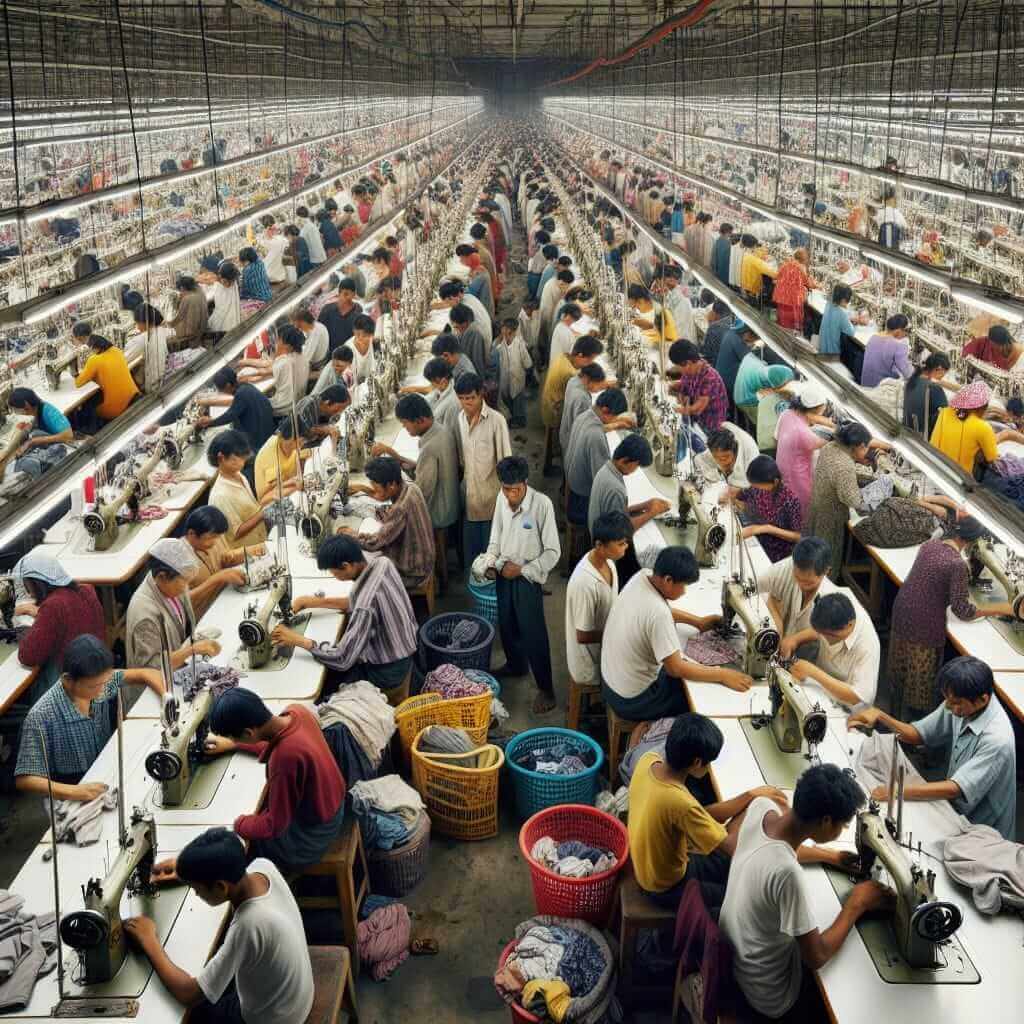The topic of “The effects of fast fashion on labor rights” has garnered significant attention in recent IELTS Writing Task 2 exams. This theme frequently appears under broader subjects like globalization, consumerism, and ethical business practices. By understanding this topic, candidates can better prepare themselves for potential essay questions. In this article, we will explore the ramifications of the fast fashion industry on labor rights and provide a model IELTS essay for practice.
Model Essay Prompt
Fast fashion has become increasingly popular in recent years. What are the effects of this trend on labor rights?
Analyzing the Prompt
The given topic requires an analysis of how the fast fashion industry impacts labor rights. Key points to consider include working conditions, wages, job security, and the ethical implications of demanding rapid production at low costs. A balanced essay should discuss both positive and negative effects but focus more on the adverse consequences due to the nature of the prompt.
Sample Essay
Fast fashion, characterized by rapidly produced and cheaply priced clothing, has surged in popularity over the last decade. While this trend has made fashion accessible to a broader audience, it has profound negative impacts on labor rights across the globe. This essay will discuss the detrimental effects of fast fashion on workers, focusing on poor working conditions, inadequate wages, and the exploitation of labor.
First and foremost, the most glaring issue with fast fashion is the deplorable working conditions faced by factory workers. Factories, especially in developing countries, often operate under unsafe and unsanitary conditions to meet the demanding production deadlines set by major fashion brands. For instance, the tragic collapse of the Rana Plaza factory in Bangladesh in 2013, killing over 1,100 workers, highlighted the dire state of these work environments.
Secondly, workers in the fast fashion industry are frequently subjected to extremely low wages. Despite working long hours, often exceeding the legal limits, factory workers receive wages that barely cover their basic living expenses. This wage exploitation is driven by the industry’s pursuit of minimal production costs to maximize profits, thus disregarding the fundamental rights of the workers involved.

In addition to poor working conditions and low wages, fast fashion also perpetuates the exploitation of labor. The industry’s demand for rapid production cycles fuels the prevalence of child labor and forced labor in some regions. Many workers, including children, are coerced into labor out of economic necessity, denying them the opportunity for education and a better quality of life.
However, it is essential to acknowledge that fast fashion has generated employment opportunities and economic growth in some developing countries. By setting up factories, these regions have seen significant industrial growth and a reduction in poverty levels. Yet, these benefits are overshadowed by the severe violation of labor rights that fast fashion perpetuates.
In conclusion, while fast fashion makes trendy clothing accessible to many, it comes at a high cost to labor rights. The industry’s detrimental impact on working conditions, wages, and the exploitation of labor cannot be overlooked. To address and mitigate these issues, stricter international labor laws and consumer awareness are imperative.
Word count: 345 words
Tips for Writing the Essay
- Vocabulary Usage: Use sophisticated vocabulary but ensure that it is contextually appropriate. For example, words like “deplorable,” “perpetuate,” and “coerce” can enhance your lexical resource score.
- Topic Sentences: Clearly state the main idea of each paragraph in the first sentence to guide the reader through your argument.
- Balanced Argument: While it’s important to discuss the negative effects primarily, briefly acknowledging any possible positive aspects can show a balanced and well-rounded perspective.
- Coherence and Cohesion: Use linking words and phrases like “first and foremost,” “secondly,” “in addition,” and “in conclusion” to ensure your essay flows logically.
Advanced Vocabulary to Remember
-
Deplorable (adjective) /dɪˈplɔːrəbl/
- Definition: Shockingly bad in quality.
- Example: The workers toiled in deplorable conditions for little pay.
-
Perpetuate (verb) /pəˈpɛtjʊeɪt/
- Definition: To make something continue indefinitely.
- Example: Fast fashion perpetuates a cycle of low wages and poor working conditions.
-
Exploitation (noun) /ˌɛksplɔɪˈteɪʃən/
- Definition: The action or fact of treating someone unfairly in order to benefit from their work.
- Example: The exploitation of child labor is a severe issue in the fast fashion industry.
-
Unsanitary (adjective) /ʌnˈsanɪˌtɛri/
- Definition: Not clean or hygienic.
- Example: Workers are often exposed to unsanitary and unsafe conditions.
-
Coerce (verb) /koʊˈɜrs/
- Definition: To persuade an unwilling person to do something by using force or threats.
- Example: Many workers are coerced into labor due to economic pressures.
Conclusion
The impact of fast fashion on labor rights is a pressing issue that presents a rich topic for IELTS essays. By understanding the negative consequences and incorporating a balanced argument, candidates can craft compelling essays. Possible future essay topics related to this theme might include sustainable fashion practices or the role of consumer behavior in driving ethical business practices.
For further practice and insight into sustainable fashion practices, consider reading The Importance of Sustainable Fashion Practices to enrich your understanding and vocabulary on the subject.